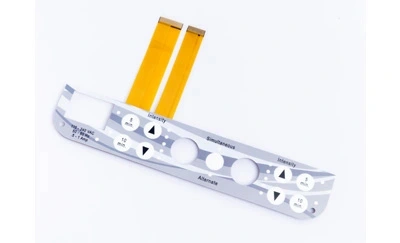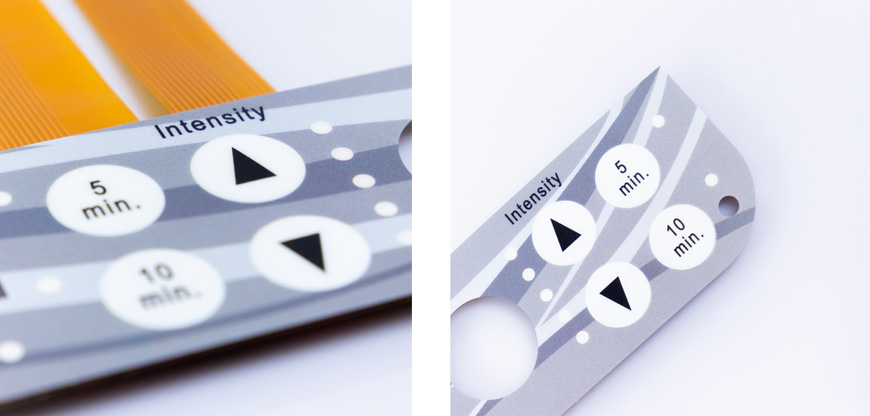
In today's fast-paced technological era, the need for efficient user interfaces has never been more pronounced. This article takes a comprehensive look at polydome membrane switches, a fundamental component in modern electronic devices, shedding light on their fascinating features and applications.

Polydome membrane switches, commonly referred to as "Polydomes," represent a crucial type of electrical switch found in a plethora of electronic devices, ranging from remote controls to advanced medical equipment. What distinguishes them is their innovative design, seamlessly marrying functionality and durability, making them an integral part of our daily interactions with technology.
To truly grasp the workings of polydome membrane switches, it's imperative to understand their intricate composition.
1. Overlay
At the topmost layer of a polydome membrane switch lies the overlay, acting as the user's interface. Usually crafted from flexible materials such as polyester or polycarbonate, this layer serves as the point of interaction for users.
2. Spacer Layer
Beneath the overlay, the spacer layer takes center stage, housing apertures that correspond to the switch's buttons. This layer provides the necessary separation between the overlay and the circuit layer, preventing inadvertent actuations.
3. Circuit Layer
The true magic of a polydome membrane switch unfolds within the circuit layer. Here, conductive traces, often made of silver or copper, form intricate electrical connections. When a user presses a button on the overlay, it initiates a downward motion of the spacer layer, thereby completing the circuit and registering the input.
4. The Evolution of Tactility: Polyester Domes (Polydomes)
A groundbreaking advancement within polydome membrane switches is the integration of polyester domes, commonly known as "Polydomes." These domes are created through a meticulous process involving the printing of a layer of conductive ink, usually a blend of silver and carbon, onto a polyester (PET) material. Subsequently, these domes are molded into semi-circular forms through the application of pressure or heat.
The name "Polydome" stems from their primary material—polyester. This hot-embossing process, often referred to as "Embossed Polydome," imbues these components with functionalities reminiscent of their metal counterparts.
Polydomes are particularly distinguished by their exceptional tactile feedback. Each button press delivers a satisfying click, providing users with tangible confirmation of their action. Moreover, these polyester domes exhibit a degree of water resistance, ensuring uninterrupted functionality even in the presence of moisture. They also excel in dust resistance, moisture resistance, and exhibit impressive heat tolerance.
Perhaps most impressively, Polydomes demonstrate remarkable pressure stability. Even when subjected to excessive force during actuation, they maintain their shape and functionality, rendering them a robust choice for an array of applications.
5. Additional Layers: Mylar, Conductive Ink, and Spacers
Mylar: Positioned at the top of the Polydome, Mylar is crafted from PET (polyester) and is typically transparent or clear. This transparency enables users to observe the conductive ink and spacers beneath it. Mylar is available in two standard thicknesses: 0.10mm and 0.125mm.
Conductive Ink: Positioned beneath the embossed semi-circular area of Mylar, conductive ink comprises silver and carbon components. The resistance of conductive ink varies inversely with the amount of silver used; the greater the silver thickness, the lower the resistance. Typical thicknesses include 0.004-0.006mm for silver and 0.005-0.006mm for carbon.
Spacers: Spacers, also crafted from PET (polyester), are located at the bottom of the Polydome. They are typically white or transparent/clear and come in two standard thicknesses: 0.15mm and 0.20mm.
Rubber Adhesive: Positioned above the polyester film, rubber adhesive is typically green and boasts a thickness of 0.125mm. It can securely adhere to silicone/rubber keypads and membrane switch overlays.
Bottom Adhesive: In practical applications, if customers intend to attach the Polydome to a circuit board, additional bottom adhesive is used in conjunction with the spacer. In this scenario, the adhesive cannot be separated from the spacer.
Polyester domes come in three fundamental structural types, serving varying assembly purposes, similar to metal dome arrays. These include stack-up and image details.
Standard Polyester Dome (Polydome) Stack-Up: The top and bottom layers lack adhesive, necessitating secure attachment to the product through screws, keyboard/keypad/PCB positioning posts.
After gaining insights into the operational principles and comparing polyester domes with metal domes, it is imperative to heed certain precautions to prevent potential damage to polyester domes:
1. Avoid Prolonged Exposure to High Temperatures (>40°C): Extended usage in high-temperature environments can result in Polyester Domes losing their elasticity.
2. Avoid Long-Term Usage in Extremely Low Temperatures (<-25°C): Extended exposure to very low temperatures can impact the lifespan of the ball mechanism.
3. Limit Outdoor Usage: Polyester domes are best suited for indoor applications. Extended exposure to outdoor conditions can affect their performance.
4. Avoid Sharp or Hard Objects: Refrain from using sharp or hard objects to press on the dome tops, as this can lead to dome damage.
By adhering to these precautions, you can ensure the longevity and optimal performance of polyester domes in your applications.
Polydome membrane switches have brought about a paradigm shift in the way we interact with electronic devices. Their outstanding durability, extensive customization options, and remarkable tactile feedback have made them the preferred choice for manufacturers across a diverse spectrum of industries. As technology advances, we can look forward to even more innovative applications for these versatile switches in the future.
1. Are polydome membrane switches waterproof?
Polydome membrane switches are not inherently waterproof. However, they can be designed with a sealed overlay and appropriate housing to enhance their water resistance.
2. Can polydome switches withstand outdoor conditions?
Certainly, polydome switches are well-suited for outdoor applications due to their durability and resilience in challenging environmental conditions.
3. What is the typical lifespan of a polydome membrane switch?
Polydome switches boast a lifespan extending into the millions of cycles, ensuring their durability and reliability.
4. Is it easy to replace polydome switches if they malfunction?
Yes, polydome switches are relatively straightforward to replace if issues arise. However, regular maintenance can help prevent most problems.
5. Can I incorporate polydome switches into my DIY electronics project?
Absolutely! Polydome switches are readily available for purchase, and their slim profile makes them an excellent choice for DIY enthusiasts embarking on electronic projects. Whether you're designing a custom keyboard, a remote control, or any other electronic device, polydome switches offer a reliable and user-friendly input solution. Their versatility and durability make them a valuable addition to any DIY project.